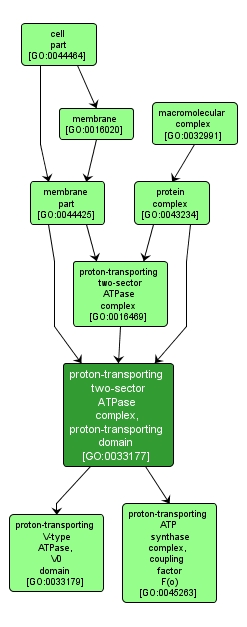GO TERM SUMMARY
|
| Name: |
proton-transporting two-sector ATPase complex, proton-transporting domain |
| Acc: |
GO:0033177 |
| Aspect: |
Cellular Component |
| Desc: |
A protein complex that forms part of a proton-transporting two-sector ATPase complex and carries out proton transport across a membrane. The proton-transporting domain (F0, V0, or A0) includes integral and peripheral membrane proteins. |
|

|
INTERACTIVE GO GRAPH
|














